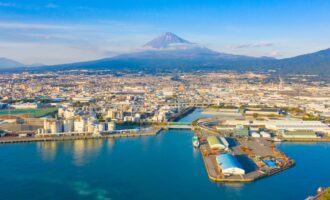Challenges in harmonising vehicle and fuel policies in Asia
By Alison Gaines
Is there a need to harmonise fuel standards in Asia? Representatives from Indonesia, Thailand and Malaysia stressed the need for harmonising fuel standards not only within, but also across geographical areas, during a half-day session dedicated to this topic at F+L Week 2015 in Singapore in March.

“That is what is on the table—not necessarily having all of ASEAN following the same standards at the same time, but encouraging all countries to make it a priority,” said Glynda Bathan- Baterina, deputy executive director of Manila, Philippines-based Clean Air Asia, who chaired the session.
ASEAN stands for the Association of Southeast Asian Nations and is composed of Brunei Darussalam, Cambodia, Indonesia, Laos, Malaysia, Myanmar, Philippines, Singapore, Thailand and Vietnam.
Organised by Clean Air Asia, the individual country presentations were preceded by an introduction by Clarence Woo, executive director of Singapore-based Asian Clean Fuels Association (ACFA), followed by a panel discussion that was webcast live globally through a sponsorship from ACFA.
GAPS BETWEEN FUEL QUALITY AND EMISSIONS STANDARDS
The basic idea that fuel quality is linked to emissions is not evident from a broad look at policies across the globe. Woo said that across the world, many countries’ fuel standards do not match their emissions standards. Such gaps in gasoline requirements exist in Australia, South Africa, Nepal, parts of the Middle East, Latin America and Russia. In the area of diesel fuel, there are gaps in Latin America, South Africa, Algeria and Russia. These data come from Stratas Advisors and were published in October 2014. Many unmentioned countries do not have gasoline or diesel standards, or have no data available.

Ruengsak Thitiratsakul, deputy executive director of the Petroleum Institute of Thailand (PTIT), also emphasised this underappreciated correlation. He referenced a workshop called “The Harmonisation of Quality Standards for Transportation Fuels and Biofuels in ASEAN,” which took place in Bangkok in November 2014. At the workshop, representatives of ASEAN+6 nations agreed that a working group or task force needs to be established for the harmonization initiative. (ASEAN+6 includes China, India, South Korea, Japan, Australia and New Zealand.)
Ruengsak said that in order for the harmonisation issue to move forward, it must be taken up by the Senior Officials Meeting on Energy (SOME), a governing body that reports to the ASEAN Ministers of Energy Meeting (AMEM). The SOME is now reviewing this. Should the SOME recommend harmonisation, it would be included in the ASEAN Plan of Action for Energy Cooperation (APAEC) for 2016-2020.
CONTINUED PRESSURE FROM GROWING AUTOMOTIVE MARKET
Demand for personal vehicles is rising steadily within ASEAN, and a decline is not anticipated in the near future.
Mohd Nazmi bin Mohd Nur, head of the research unit at the Malaysian Automotive Institute, shared that in Malaysia, the automotive industry (including motorcycles) has contributed 3% to 4% annually to the country’s gross domestic product (GDP). “It is expected,” Mohd Nur said, “that the industry will continue to spur Malaysian economic growth.”

Dasrul Chaniago, director of mobile source pollution control at the Ministry of Environment and Forestry in Indonesia, showed similar data for Indonesia, predicting a steady upward slope of vehicle ownership through 2030, with the vast majority of vehicles being motorcycles.
Across ASEAN, Ruengsak showed that between 2004 and 2012, total vehicle registration in ASEAN has been growing at an average of 11% per year. In terms of vehicle registration per 1,000 people, the growth between 2004 and 2012 has averaged 5% per year.
Unlike in Europe and North America, the market for individual vehicle ownership in ASEAN has not yet been saturated. These countries’ GDPs are still growing, with more roads being built and new construction projects being started. The need for high-quality fuels is great, and will only continue to grow, because of continued growth in vehicle population.
DISPARITIES WITHIN ASEAN/FLEET CHALLENGES
ASEAN countries, which are in different stages of economic growth, are also in different stages of fuel quality standards.
They range from Euro I-equivalent (Myanmar, Cambodia and Brunei’s current gasoline standards) to Euro V (Singapore’s current diesel standard). The need for harmonisation, Ruengsak said, exists on three levels: economic, environmental and social.
“Imagine how trade can be easily done, imagine how product exchange can be easily done,” he said, highlighting the economic side. Environmental benefits include lower particulate matter and greenhouse gas emissions, which easily translate to health benefits.
According to Woo, the disparities in terms of each country’s standards, and therefore the challenges to harmonisation, mainly stem from the differences among countries in terms of affluence, types of vehicles and GDP.

K.K. Gandhi, executive director, technology, of the Society of Indian Automotive Manufacturers (SIAM), said that while policy harmonization is necessary, achieving it will not be without its challenges and even drawbacks.
India has implemented the equivalent of Euro III across the country, and Euro IV in about 40 cities. Since the fuel quality requirements of Euro V and Euro VI are the same, according to Gandhi, many have suggested that India transition directly to Euro VI by 2020. However, simply advancing to the next Euro equivalent standards, Gandhi said, can damage the aftertreatment systems of cars.
Gandhi referenced a study conducted in 2007 by India’s Central Pollution Control Board (CPCB). The summary, published in 2011, echoes some of his concerns. The Air Quality Monitoring, Emission Inventory and Source Apportionment Study was carried out in Bangalore, Chennai, Delhi, Kanpur, Mumbai and Pune. Its conclusions acknowledged that “Bharat Stage (BS) III fuel [Euro III equivalent] is available only in the city and not even 20-30 km away from city boundary.”
Additionally, many drivers travelling in and out of the city decide to refuel outside the city, because the fuel there is cheaper. It is also of lower quality, often with higher sulphur content. This poses a risk to newer vehicles, because “very short distance exposure to low-grade fuel quality may damage these devices permanently and thus making newer generation of in-use vehicles not effective or even worse than those of earlier generation vehicles due to the failures of emission control devices,” according to the report.
The report ends by underscoring the need for “one country, one fuel quality and one regulation.”
This call for harmonization is part of a larger paradox: While the answer to India’s disjointed fuel supply is harmonisation, that goal cannot be achieved without incurring some of the same problems that vehicles face now. Gandhi says that India “needs to turn over the fleet” because clean fuels are only part of the solution to better air quality, and the fleet in India and ASEAN is very different from the European examples being followed with the Euro standards.
However, Gandhi stressed, there are even more factors besides fuels and vehicles. The CPCB report mentions, and Gandhi echoed, that at least during the 2007 study, PM10 emissions came from a variety of sources besides road transport. Other sources of PM10 include re-suspension of dust on unpaved roads, power plants and other industrial sources, refuse burning and the use of diesel generator sets.
Gandhi said, “[India has] so many sources of pollution … and a shortage of electricity.”
HURDLES FOR POLICYMAKERS
Eric Zussman, principal policy researcher at the Institute for Global Environmental Studies in Hayama, Japan, joined the discussion via webcast. In a working paper of which he is a co-author, he examines the gaps between policy and the practice of diesel regulation in China, India, Indonesia and Thailand.
“Ministries of Environment face an uphill battle,” he said, on the path to widespread use of clean diesel, partly because of fuel subsidies. The subsidies offered by governments for diesel fuel can, as Zussman puts it, “lock in” refineries to producing a fuel that is not up to the standards in terms of sulphur content.
In October 2014, India took advantage of the worldwide drop in crude oil prices and did away with its diesel subsidy. At the very end of 2014, Indonesia scrapped its gasoline subsidy. It did retain its diesel subsidy, fixing it at IDR 1,000 (about 8 U.S. cents) per litre. Chaniago shared that in Indonesia, encouraging the use of gasoline, as opposed to diesel, is one strategy in moving toward better air quality. However, he said, consumers will usually choose the cheaper option. Thailand has also faced a rise in the use of diesel since its price was fixed in 2011.
Besides allocating a huge percentage of government spending to paying for fuel, subsidies keep diesel clean or not—in the mainstream of public use. Indonesia and Malaysia have recently taken steps to increase the use of biofuel: In Indonesia, petroleum diesel must be blended with 15% biodiesel. In Malaysia, the biodiesel blending requirement is 7%.
One scenario, according to Zussman, could dramatically reduce the output of fine particulate matter (PM2.5) in the four countries of his focus. If, beginning in 2015, each country quickly and effectively moved to Euro VI standards, they would see two or two and a half times lower PM2.5 emissions. However, Zussman’s data also showed that the difference between originally planned policy and actual practices has continued to widen over time. Furthermore, the Malaysian and Indonesian speakers made it clear that at least in their countries, Euro VI is quite far from being implemented.
Chaniago said that Indonesia has talked about moving to Euro IV since 2013, and that the implementation of Euro IV standards still requires one more step. Specifically, the ministry is in talks with Pertamina, the stateowned oil company.

According to Mohd Nur, Malaysia currently follows Euro II standards for both gasoline and diesel, although in 2014, 13 stations started selling Euro V fuel in Johor. By 2015, he expects Euro V fuel to be available to all other states, especially in the Klang Valley.
In line with Gandhi’s admonition that the fleet is part of the problem, several countries have programs in place to populate the fleet with clean vehicles. Under Thailand’s Eco-Car program, foreign manufacturers agree to build a certain number of new, affordable and fuel-efficient vehicles per year. They must adhere to requirements for engine displacement, fuel consumption and CO2 emissions per kilometre. Thailand’s Board of Investment offers tax incentives for purchasers as well as manufacturers. According to the market research firm IHS, the share of eco-cars in Thailand will probably reach 29% by 2016.
Indonesia has a low-cost green car program with similar requirements. Each vehicle costs less than IDR 100 million (USD 7,680). Approximately 14% of Indonesia’s vehicle purchases in 2014 were low cost green cars.
Mohd Nur shared that Malaysia has a program for energy efficient vehicles (EEVs) that receive tax incentives as well. Its National Automotive Policy details carbon emissions and fuel consumption levels, showing the parameters for different weights of vehicles to qualify as EEVs. The Malaysian program also covers two-wheelers, unlike Thailand’s and Indonesia’s.
These programs, while encouraging vehicle ownership, also contribute to building a fleet of cleaner vehicles that is necessary for better air quality. The challenge for all parties involved is ensuring that an efficient, low-emitting fleet is on the road, and that drivers have access to, and are willing to use, compatible clean fuels.







